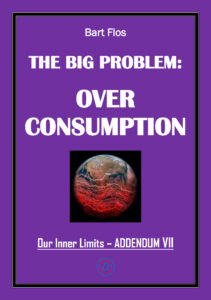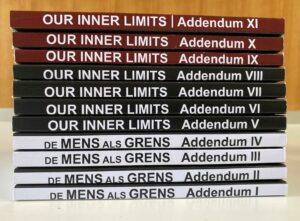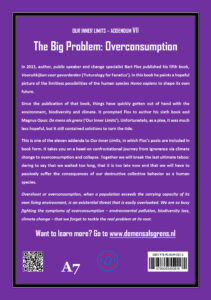 The great thing about writing a post on LinkedIn is that, even more so than on Twitter and unlike Facebook, you are forced to limit your message to about 500 words (3000 characters). Schrijven is schrappen (‘Writing is scrapping’ – thank you Simon Carmiggelt) is, as it were, enforced here, accurate to the very punctuation mark and that is good, as an author it’s very educational. Because it forces you to shorten the message to a length that should be manageable even for the hurried, overloaded, I’m-busy-busy-busy reader, without losing sight of the core message.
The great thing about writing a post on LinkedIn is that, even more so than on Twitter and unlike Facebook, you are forced to limit your message to about 500 words (3000 characters). Schrijven is schrappen (‘Writing is scrapping’ – thank you Simon Carmiggelt) is, as it were, enforced here, accurate to the very punctuation mark and that is good, as an author it’s very educational. Because it forces you to shorten the message to a length that should be manageable even for the hurried, overloaded, I’m-busy-busy-busy reader, without losing sight of the core message.
This book is an addendum, a supplement to my sixth book Our Inner Limits. There are a total of eleven addenda, four in Dutch and seven in English. The English addenda are not direct translations of the Dutch addenda. On LinkedIn I often respond to English posts in English. Sometimes I translate them into Dutch, but they also stand alone. The same applies the other way around: sometimes I translate a Dutch post into English, sometimes not. So if you speak the English language – and who doesn’t in the Netherlands – and if you want to be completely informed, read all eleven. (If you don’t master the Dutch language, I’m glad I am able to offer you seven English addenda. The gist of my message is just the same).
 At an average reading speed of about 250 words per minute, each subchapter in this book will only take you a few minutes. So I would like to say: do you have a little less time now? Then choose a few chapter titles that appeal to you and spend ten or fifteen minutes on them. Each post stands alone and all I did was put them into a book template and made sure that the information I referenced and responded to was not lost. So you can pick up the addenda and put them away whenever you want. In any case, it is best to take in the information in steps. I wouldn’t want you to be overwhelmed.
At an average reading speed of about 250 words per minute, each subchapter in this book will only take you a few minutes. So I would like to say: do you have a little less time now? Then choose a few chapter titles that appeal to you and spend ten or fifteen minutes on them. Each post stands alone and all I did was put them into a book template and made sure that the information I referenced and responded to was not lost. So you can pick up the addenda and put them away whenever you want. In any case, it is best to take in the information in steps. I wouldn’t want you to be overwhelmed.
Each of the eleven addenda is the size of an average management book, between 30,000 and 35,000 words. The posts were written from October of 2022 through February of 2024 and are presented in more or less chronological order in the books. The posts are also presented chronologically for each subchapter. So don’t be surprised by any progressive insights.
Each addendum is a collection of stories, insights and reflections, loosely classified into 11 fixed chapters:
 The frontal confrontation
The frontal confrontation- The collapse
- Economy versus ecology
- The Almighty Algorithm
- Distraction, deception, doubt and deceit
- The climate conflict
- About climate stupidity
- Looking down from above
- Pollution, waste and destruction
- Global consultation doesn’t work
- Science, truth and reality
Please note: not all chapters appear equally in all addenda.
If you’ve worked your way through all four (or eleven) books, you’ll have taken a journey from ignorance to climate change to overconsumption and collapse. Not all journeys are equally enjoyable to make and this one marks the beginning of the end, a frontal confrontation with our major existential problems and uncovers the very last, ultimate taboo: the collapse of human civilization as we know it today. That, by the way, does not necessarily mean ’the end of the world’: the extinction of the human species. But it has now become a serious option indeed.
Finally: while in my book Our Inner Limits I leave it to the dear reader to draw their own conclusions about where the human species is going, I am much more explicit in these eleven addenda , more ‘right in your face’ and perhaps a bit blunt here and there. Because as a self-proclaimed confrontationalist, I firmly believe that only a frontal confrontation with truth and reality can, perhaps, open our eyes to what is coming our way.
Good luck and success!
Bart Flos
Helmond, November 2024.
